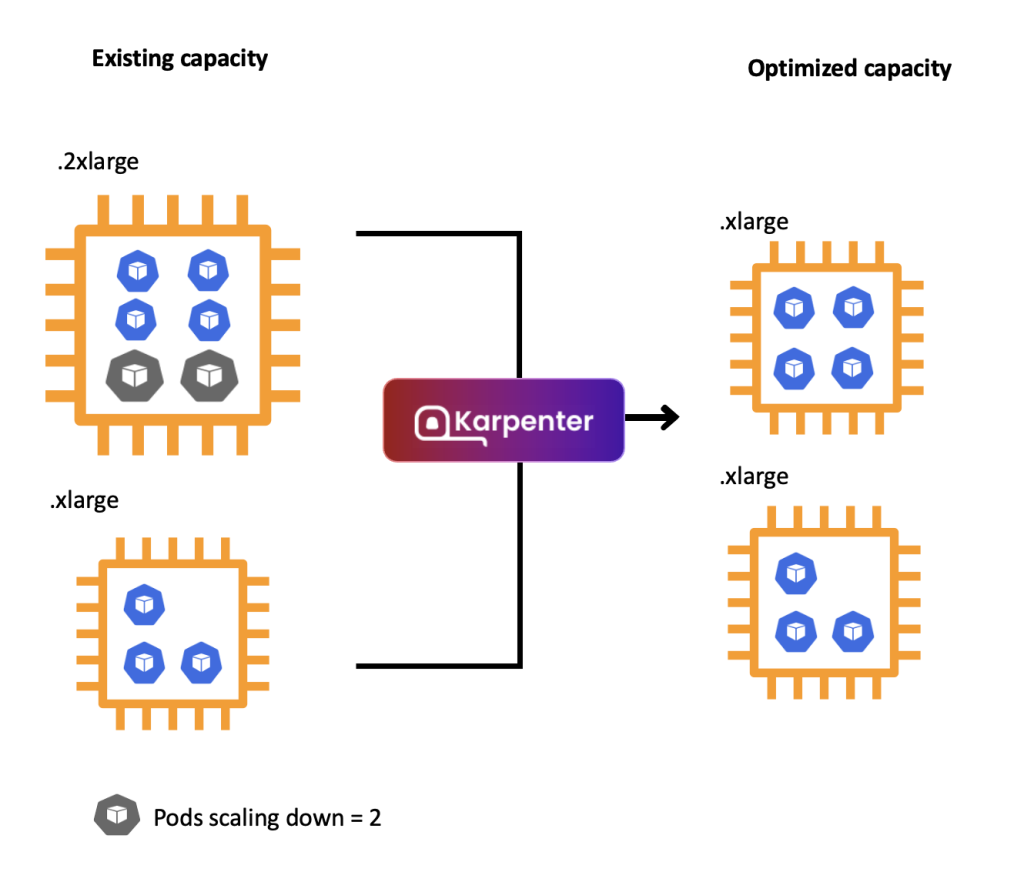AWS Compute Blog
Category: Amazon Elastic Kubernetes Service
Applying Spot-to-Spot consolidation best practices with Karpenter
This post is written by Robert Northard – AWS Container Specialist Solutions Architect, and Carlos Manzanedo Rueda – AWS WW SA Leader for Efficient Compute Karpenter is an open source node lifecycle management project built for Kubernetes. In this post, you will learn how to use the new Spot-to-Spot consolidation functionality released in Karpenter v0.34.0, […]
Simplifying Amazon EC2 instance type flexibility with new attribute-based instance type selection features
This blog is written by Rajesh Kesaraju, Sr. Solution Architect, EC2-Flexible Compute and Peter Manastyrny, Sr. Product Manager, EC2. Today AWS is adding two new attributes for the attribute-based instance type selection (ABS) feature to make it even easier to create and manage instance type flexible configurations on Amazon EC2. The new network bandwidth attribute […]
Deploying AWS Lambda functions using AWS Controllers for Kubernetes (ACK)
This blog post shows how AWS Controllers for Kubernetes enables you to deploy a Lambda function directly from your Amazon EKS environment. AWS Controllers for Kubernetes provides a convenient way to connect your Kubernetes applications to AWS services directly from Kubernetes.
Performance and functionality improvements for AWS Lambda extensions
AWS Lambda extensions are a new way to integrate Lambda more easily with your favorite monitoring, observability, security, and governance tools. With the general availability announcement, AWS is introducing performance and functionality improvements. The Lambda service now returns the response from the function as soon as the function code is complete without waiting for the […]
Building private cross-account APIs using Amazon API Gateway and AWS PrivateLink
This post is written by Brian Zambrano, Enterprise Solutions Architect and Srinivasa Atta, Sr. Technical Account Manager With microservice architectures, multiple teams within an organization often build different parts of an application. Different teams may own functionality for a given business segment. An effective pattern to support this is a centrally managed public API. This […]
Running cost optimized Spark workloads on Kubernetes using EC2 Spot Instances
This post is written by Kinnar Sen, Senior Solutions Architect, EC2 Spot Apache Spark is an open-source, distributed processing system used for big data workloads. It provides API operations to perform multiple tasks such as streaming, extract transform load (ETL), query, machine learning (ML), and graph processing. Spark supports four different types of cluster managers (Spark standalone, Apache […]
Building for Cost optimization and Resilience for EKS with Spot Instances
This post is contributed by Chris Foote, Sr. EC2 Spot Specialist Solutions Architect Running your Kubernetes and containerized workloads on Amazon EC2 Spot Instances is a great way to save costs. Kubernetes is a popular open-source container management system that allows you to deploy and manage containerized applications at scale. AWS makes it easy to run […]
Using AWS App Mesh with Fargate
This post is contributed by Tony Pujals | Senior Developer Advocate, AWS AWS App Mesh is a service mesh, which provides a framework to control and monitor services spanning multiple AWS compute environments. My previous post provided a walkthrough to get you started. In it, I showed deploying a simple microservice application to Amazon ECS […]
Scaling Kubernetes deployments with Amazon CloudWatch metrics
This post is contributed by Kwunhok Chan | Solutions Architect, AWS In an earlier post, AWS introduced Horizontal Pod Autoscaler and Kubernetes Metrics Server support for Amazon Elastic Kubernetes Service. These tools make it easy to scale your Kubernetes workloads managed by EKS in response to built-in metrics like CPU and memory. However, one common use case for applications […]
Learning AWS App Mesh
UPDATE – Oct 26 2020 – We have updated the instructions and recommended configurations for AWS App Mesh, which can be found in this GitHub repository: https://github.com/aws/aws-app-mesh-examples/tree/master/examples/apps/djapp. Please consider the below steps deprecated, but we are leaving the post live for its deeper explanation of some of the steps involved. This post is contributed by […]








